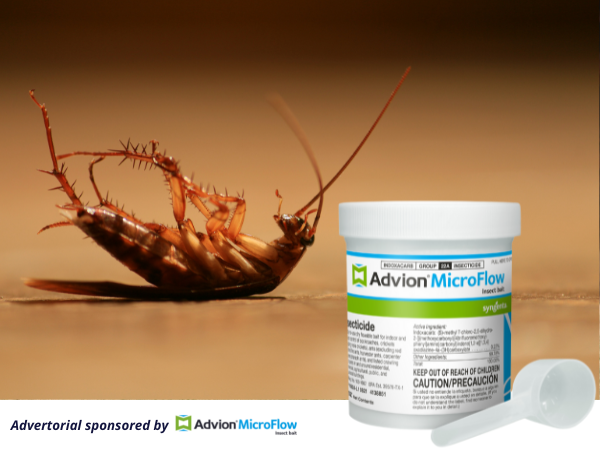11/1/2022
Connectivity Articles

The benefits of adding a dry flowable bait into your IPM plan
While dry flowable bait may be underutilized in integrated pest management (IPM) programs, this formulation has several beneficial features that can enhance treatment protocols.
It is common for pests to harbor within deep, hard-to-reach voids. These spots are often overrun with pests like cockroaches, are susceptible to continued reinfestation and can be difficult to reach with sprayable liquids and gel baits. Dry flowable bait is designed to drift deep into cracks, crevices and voids when applied with power dusters and handheld application devices that blow air, offering an effective solution for these situations.
Dry flowable bait containing a balanced diet of carbohydrates, lipids and proteins is palatable to many insect pests and can potentially manage any insect with chewing mouthparts, including cockroaches, ants, crickets, earwigs and silverfish. Additionally, dry flowable bait offers secondary control that’s enhanced in social pests like ants and cockroaches. This occurs through the same means as gel and granular baits (i.e., trophallaxis), and by feeding on the feces, vomit and affected carcasses. Dry flowable bait also contains small particles that adhere to the exoskeletons of donor pests, leading to additional control when pests feed and groom each other.
Indoor applications
Dry flowable bait is a strong addition to protocols using liquid residuals, gel baits and glue board traps. It can replace most traditional dust applications indoors and enhances pest mortality as a non-repellent bait. Target areas within clean-out or maintenance service visits should include:
Outdoor applications
Perimeter programs containing residual liquids and granular baits/insecticides can benefit from adding dry flowable bait. Like indoor applications, cracks, cervices and voids are the primary target, but any structure opening accessible from outdoors may need treatment. Areas to consider for treatment include:
As part of its commitment to provide innovative solutions for pest management professionals (PMPs) and help their customers live a life uninterrupted by pests, Syngenta created Advion® MicroFlow insect bait. PMPs can control tough infestations with Advion MicroFlow, which offers:
Achieve outstanding control of hard-to-reach pests by adding a dry flowable bait to your IPM program. For more information, visit SyngentaPMP.com/AdvionMicroFlow or contact your local Syngenta territory manager.
View other articles in this category: